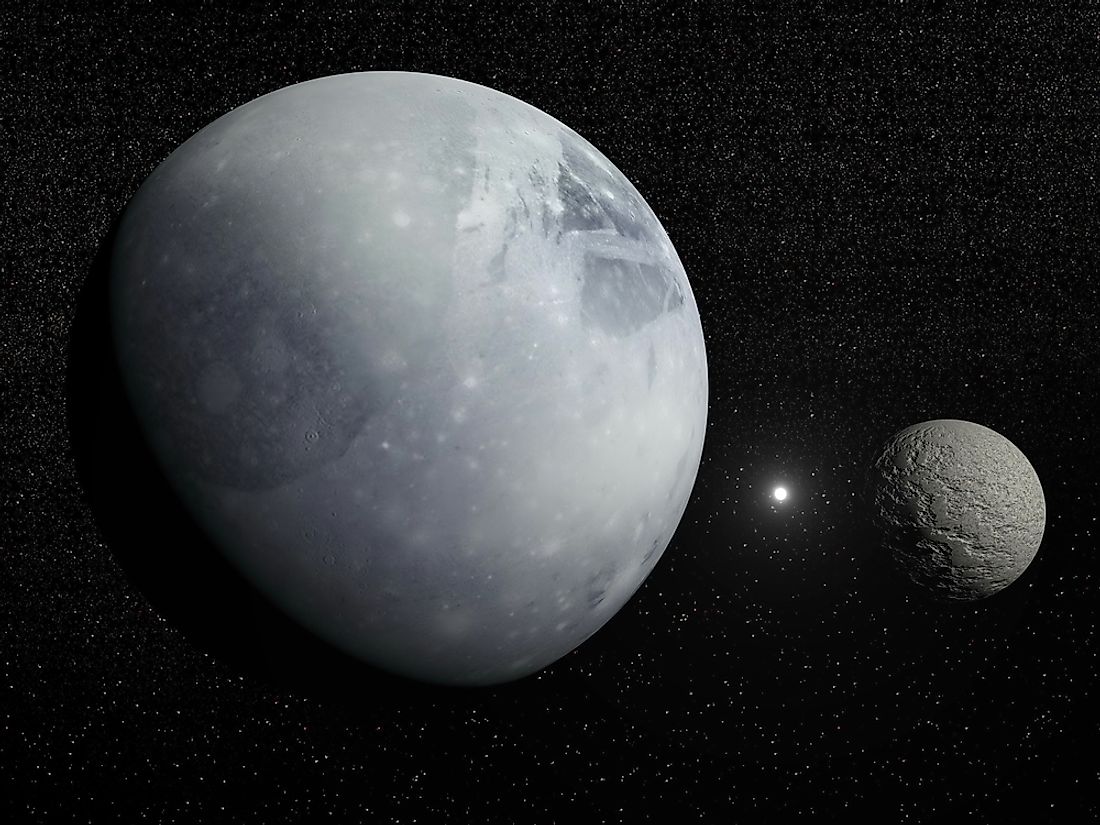What Is a Planetoid?

A planetoid, or a minor planet is a celestial object that orbits the sun but is neither a planet nor a comet. The first minor planet was discovered in 1801. It was known as Ceres and was also referred to as a dwarf planet.
The term "minor planets" traces its roots back to the 1800s. The term asteroids, minor planets, and planetoids have been used interchangeably throughout history. However, the situation became more confusing when the Committee for the International Astronomical Union (IAU) reclassified comets and minor planets into two new categories: small solar system bodies and dwarf planets. It was at this time when the IAU also established a new definition of what a planet is, ultimately reclassifying Pluto as a dwarf planet.
How Are Minor Planets Identified?
The minor planet's ability to adopt a roughly spherical shape is known as hydrostatic equilibrium. The spherical shape is what distinguishes dwarf planets from the smaller solar system bodies which are more irregularly shaped. The terminologies can become even more confusing as the IAU still acknowledges the use of the name minor planets.
The History Of Minor Planets
Minor planets are a popular occurrence in the solar system. There are more than 400,000 registered minor planets and thousands more which are found each month. About 15,000 of the registered minor planets have been given official names while the others are simply numbered. Astronomers created symbols for the first asteroids that were discovered. Astronomers created symbols for 14 asteroids, some of which were very intricate, such as the Victoria's symbol. Victoria's symbol resembles a plant which has three leaves growing out of an off-center starburst.
Some asteroids, such as Ceres, were named after characters from Roman and Greek mythologies. Following the discovery of Pallas and Ceres, astronomers assumed that these two asteroids were both planets. Soon enough astronomers ran out of mythological names and started naming asteroids after relatives of discoverers, famous people, and television characters. Most of these names were feminine, attributing to an unnamed tradition. As asteroids continued to increase in numbers, astronomers started naming them after their pets. Following the naming of a minor planet as 2309 Mr. Spock, the use of pet’s names was prohibited. However, the whimsicality did not completely stop since names such as 6402, Cheshire cat and 9007 James Bond were both suggested and accepted.
Categories Of Minor Planets
Minor planets fall into some different categories including Trans-Neptunian objects, asteroids, and centaurs. There are different types of asteroids in existence. However, most asteroids can be found in the asteroid belt, which is the region in space between Jupiter and Mars. While Trans-Neptunian objects are celestial bodies that can be found orbiting beyond Neptune, centaurs are celestial bodies that have unstable orbits situated between Neptune and Jupiter. The mentioned categories often overlap thus making the classification of such celestial bodies an arduous task. An example is Ceres which is classified as a minor planet, a dwarf planet, and additionally also as an asteroid.
Physical Properties Of Minor Planets
Little to almost nothing is known about most of the numbered minor planets also classified as asteroids. Aside from a few orbital elements and physical parameters some of the physical traits of minor planets are often only approximated. The determination of the physical data is made through certain standard assumptions. For example, aside from knowing the true densities of a few asteroids mainly through thorough investigations, most astronomers resort to enlightened guesswork where the physical characteristics of minor planets are concerned.











